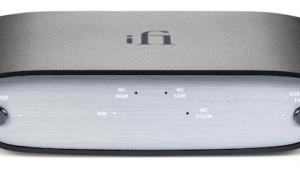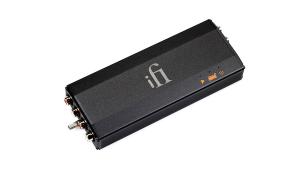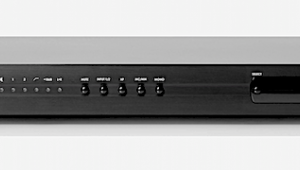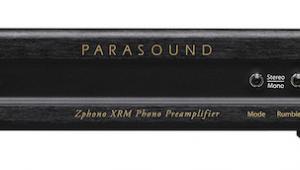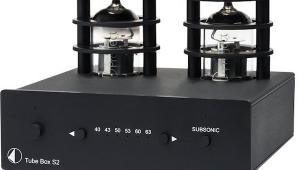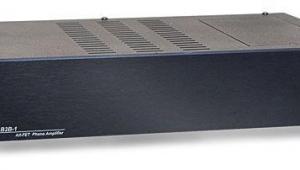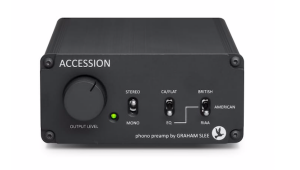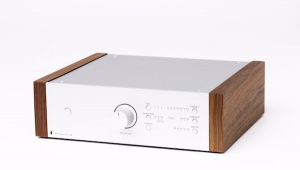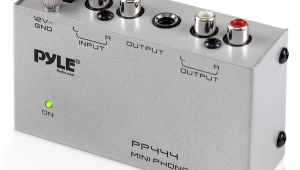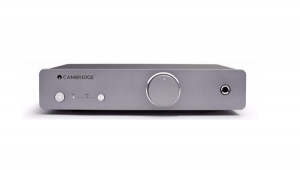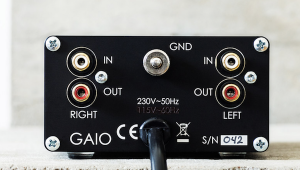Audio Research Reference phono preamplifier Page 2
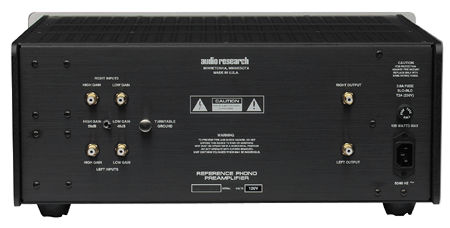
It takes at least an hour from power up for the Reference to sound its best, so leaving the unit On and in Standby mode is a good way to go if you don't want to wait the hour. In that position, voltage is applied only to the tube heaters. You save tube life, yet the unit is partially warmed up. Moving from Standby to Operate, there's about a 30-second auto mute before you can begin playback. To avoid potentially dangerous thumps, the Mute switch should be activated whenever you lower or raise the pickup arm or change the input.
Sound
While no acute listener will ever mistake the Audio Research Reference for the PH3 or PH3 SE, all three phono preamps are cut from the same basic cloth. That's a good thing—consistency is the mark of a surefooted company. If you object to the PH3's overall tonal balance as being too open, or even bright, you might not like the Ref's sound. Conversely, if you've listened to a great-sounding phono section at the other end of the sonic spectrum—Conrad-Johnson's Premier 15, for example—and found it too dark, stuffy, bloomy, and noisy, the Ref might just be your ticket to analog happiness.
The Reference can handle very-low-output MC cartridges, such as the new Transfiguration Temper Supreme (0.2mV, see this issue's "Analog Corner"), and deliver both dead-silent backgrounds and a sense of unrestricted dynamics—with, of course, gain to spare. Credit the use of step-up transformers for this level of quiet with 69dB of gain.
That said, I did encounter one annoying buzzing sound on the High Gain setting using both the very-low-output Temper Supreme and Parnassus D.C.t cartridges. Although it sounded like a grounding problem, I was unable to eliminate it with a cheater plug or anything else I tried. And it was only on the High Gain setting, so it seemed unlikely to be a grounding problem. Nor was there any other source of hum near the transformers.
At the end of the review period I returned the unit to Audio Research. A factory modification to the grounding circuitry (included in all future production) eliminated the buzz which apparently occurred with only a few low-output MC cartridges. Owners of pre-modification units who encounter the problem when switching to a new cartridge should contact Audio Research for the update.
If you're worried about hardness or ringing from the transformers, you needn't—these are not inherent sonic characteristics of step-up transformers. Whatever the resonant frequency of these Jensens, it is obviously way out of the audioband.
The 6922 tube has a signature sound (as does the 12AX7); if you know it, you're halfway to knowing the basic sound of the Ref without a personal audition—or reading this review, for that matter. The 6922 does not sound "tubey"; it's a wideband, low-noise, relatively neutral device, and that is the overall tonal balance of the Reference phono preamp, though the character of that sound is in the ear of the beholder.
If you want "bloomy" and "lush," you'll have to look elsewhere. If you want "plush," you'll get plenty of that with the Ref. By "plush," I mean a tactile rendering of instrumental attack that was fast and detailed without ever sounding hard or etched. The Reference exuded a relaxed, top-to-bottom ease without sounding sluggish, congested, timid, or bulbous—even as it portrayed macrodynamics with breathtaking authority.
The PH3 SE, good as it is, cannot match, among other attributes, the Ref's overall tonal neutrality; its airy, extended, yet etch-free highs; its ability to sort out individual instruments on the soundstage (particularly toward the rear); or the ease with which it unraveled instrumental lines and portrayed impossibly low-level microdynamic gradations without clogging up the sonic picture—one of its most important sonic achievements. After hearing the Reference, the PH3 SE's consistent midrange bloom, while attractive, sounds like a slight coloration or congestion.
The Ref didn't bloom in the midrange, but delivered convincingly rich instrumental harmonics in that all-important area while more accurately revealing the essential sonic nature of the recordings it reproduced. Yet some listeners may well be left unmoved by the Ref's midband performance because it isn't "bloomy."
There was never a trace of hardness or congestion from this phono preamp. Nor did it err in the opposite direction with an overly soft, ripe presentation. With its vanishingly low noise floor and superior microdynamic delivery, the Reference was, in my listening experience, the champion at resolving inner detail, doing so without spotlighting or highlighting. Details were just there.
I've listened to Nat King Cole's Live at The Sands (Capitol SMAS 2434) a hundred times. I thought I knew every applause, whistle, and vocal outburst on the record. Yet through the Ref I heard a few raucous tables in the back of the club that till now had gone missing in action. More important, details of Cole's fabulous piano playing—his right hand in particular—that had formerly been lost in the haze of what sounds like post-production artificial reverb, were also now there, right below his voice. And the timbre of the piano's upper octaves was fleshed out more effectively than I've ever heard.
The Reference's tonal neutrality, clarity, background quiet, and seemingly unrestricted bass response and dynamics gave it the ability to delineate, more clearly than I've ever experienced, the differences not only between familiar cartridges, but also between new ones under review: the touch of bass emphasis imparted by the EMT TU-2, the slight dynamic constriction of the far more tonally neutral Crown Jewel SE, the Grado Statement's romantic upper-midrange "warm zone" and slight lack of low-bass definition and extension. The Reference revealed more of the cartridges it was amplifying and less of itself.
Give this phono preamplifier the best source material, such as Classic Records' 45rpm reissues of Belafonte at Carnegie Hall (LSO 6006-45) or The Royal Ballet (LDS 6065-45), and it will distinguish itself from the rest of the pack by its seemingly unrestricted dynamic range, bass control and extension, its ability to separate instruments in space and portray them as three-dimensional entities, and its complete freedom from amusical artifacts. This phono section behaves.
Will the Audio Research Reference phono section be the ticket for every analog lover? Inevitably, no. One man's neutrality is another's stingy midband. Some may prefer a more taut, less voluptuous bass line (though no one could ask for better extension), or crisper transients, or less extension on top. Some may prefer a slightly more lush overall presentation, or one with more weight on the bottom, or an overall greater sense of solidity. This is one phono preamp that, with its ultra-high gain and wide dynamic range, can handle resistive loading. I would urge anyone buying it to try 100 ohms if the 280 ohm setting isn't warm or rich enough. For my tastes, with either the Sonus Faber Amati Homages or the Audio Physic Virgos, I found the 280 ohm factory setting just about right with either the Temper Supreme or the Parnassus D.C.t cartridge.
Overall, the Reference is among the most effectively balanced products I've ever heard. It holds together extremely well, never letting its seams show. If it has any glaring weaknesses or deficiencies, I didn't discover them. Its ability to pass on the sonic character of the cartridge it is amplifying was unmatched in my listening experience.
Conclusion
In my July 1999 review of the Conrad-Johnson Premier 15, I wrote: "you'll find some phono preamps that are somewhat quieter, some that offer slightly greater transparency, a few that deliver a shade more extension at the frequency extremes or are better able to resolve low-level detail and perhaps yield slightly greater depth—but few will be as well-balanced and musically satisfying as the Conrad-Johnson Premier 15."
Well, the Audio Research Reference offers all of those things: more quiet, greater transparency, more extension at the frequency extremes, and better resolution of low-level detail. Yet the first few weeks I spent with the Ref were underwhelming. Its lack of "character" left me unimpressed. I looked for greater excitement. I expected it to pass on to me heretofore hidden musical truths from my system and my favorite music. I waited for it to break in and bowl me over, blow me away. I waited for it to stop time.
It never did. Over time, though, I came to recognize that the Reference's greatness was in its ability to let through, unimpeded, what was coming from the cartridge connected to it. The sonic step up from, say, a Clavis D.C. to a Parnassus D.C.t was revealed to be far greater through the Ref than I'd previously experienced with any other phono section. The Ref's bass extension and dynamics, while setting new performance standards in my listening experience, revealed their greatness only with a cartridge capable of pushing those boundaries. In short, the Reference added nothing.
Before and during the review period, there were many upheavals in my system and in my life: I reviewed the most expensive loudspeakers and amplifiers I've ever had in my system, the Sonus Faber Amati Homages ($20,000)—and I bought them. I reviewed the $25,000 KR Enterprise VT8000MK amplifiers—clearly the finest amps I've ever heard. And I moved to a new, larger listening room.
Through all of this I had the Reference and my reference: the phono section built into the Ayre K-1. Before completing this review, I made sure to refer back to the Ayre, and to put my previous reference loudspeakers, the Audio Physic Virgos, back in the system. (I've since sold the Virgos, but consider them to be one of the best hi-fi investments I ever made.)
I did not confuse the superior performance of the Amatis or the KR amps with what I was hearing from the AR Reference. Much to my chagrin, in comparison to the $6500 Ref, the Ayre's built-in $1600 phono stage—a really fine performer—sounded smaller, dynamically constricted, and tonally and texturally incomplete. Given the price difference, why should I have expected anything else?
I've gone back to reviews I've written of other phono sections and found some of the same words and phrases I've used to extol the virtues of the Reference. Yet from where I sit now, the Ref's performance is probably superior in most regards. Without having all of those products here now to listen to on my current system, it's hard to be sure. In the final analysis, taste plays a major role here. Though it has less gain and is noisier overall, some may prefer the C-J 15's emotional portrayal of the music.
The only product that I still think betters the Reference is no longer available: Peter Mares' Connoisseur, a $10,000 hand-built, solid-state unit with point-to-point wiring. That phono section made time stand still. But who knows what it would sound like in my current system? Ah, the vagaries of the review process...
In any case, the Audio Research Reference is a serious contender for the best phono preamplifier currently available. It certainly is among the very best, and an impressive achievement. If AR chooses to make the Reference its last statement on analog sound reproduction, the company will have gone digital on a very high note.
- Log in or register to post comments





